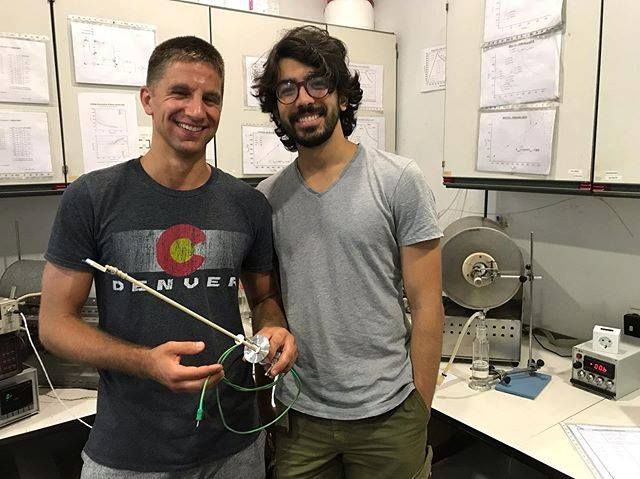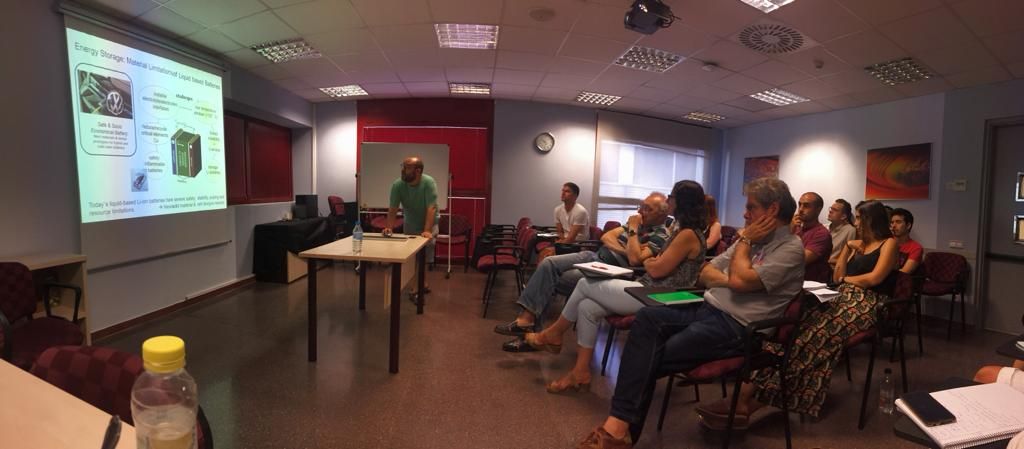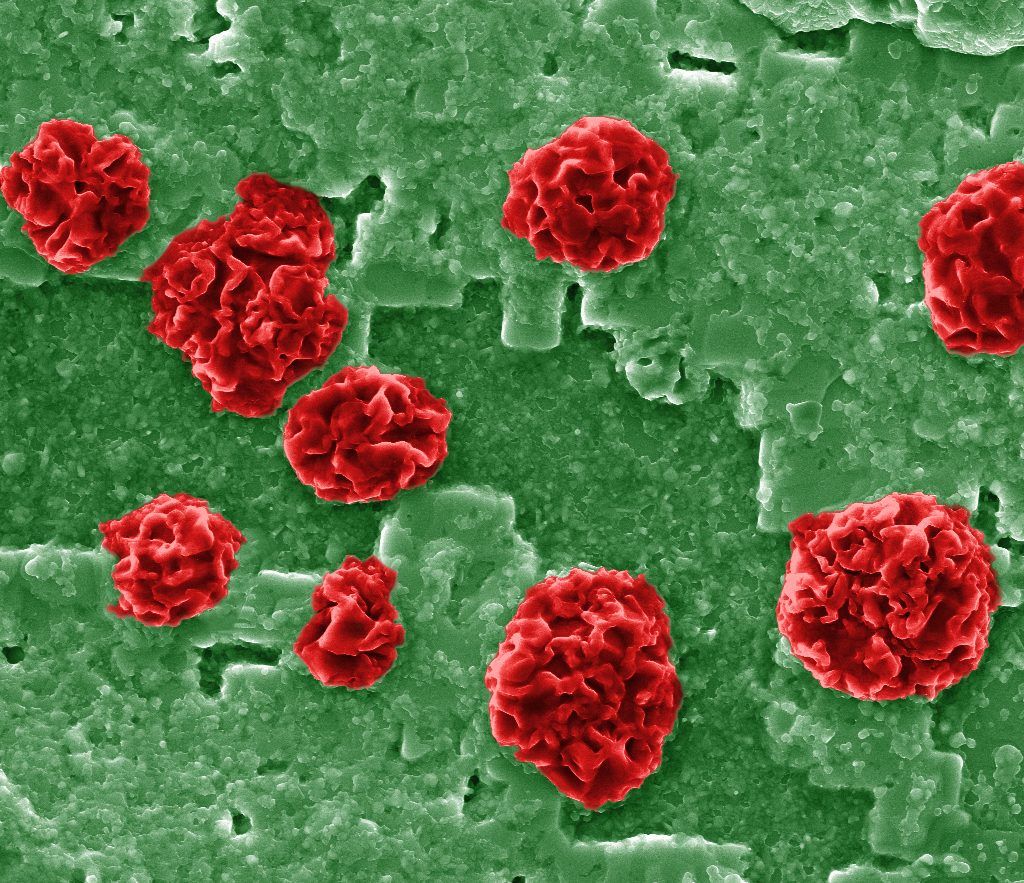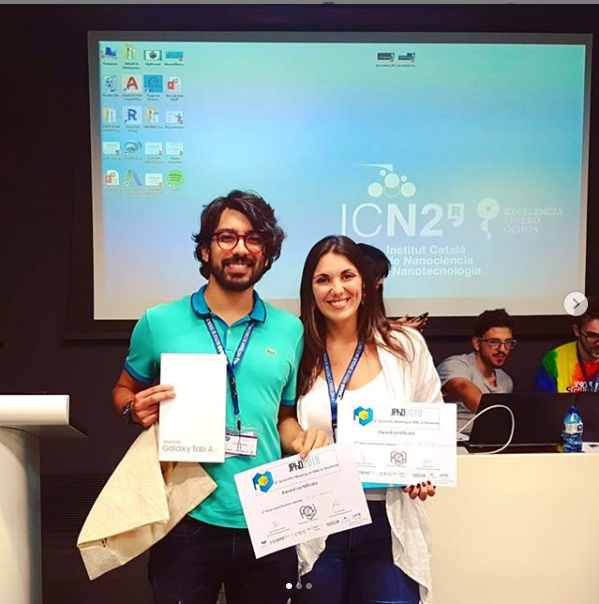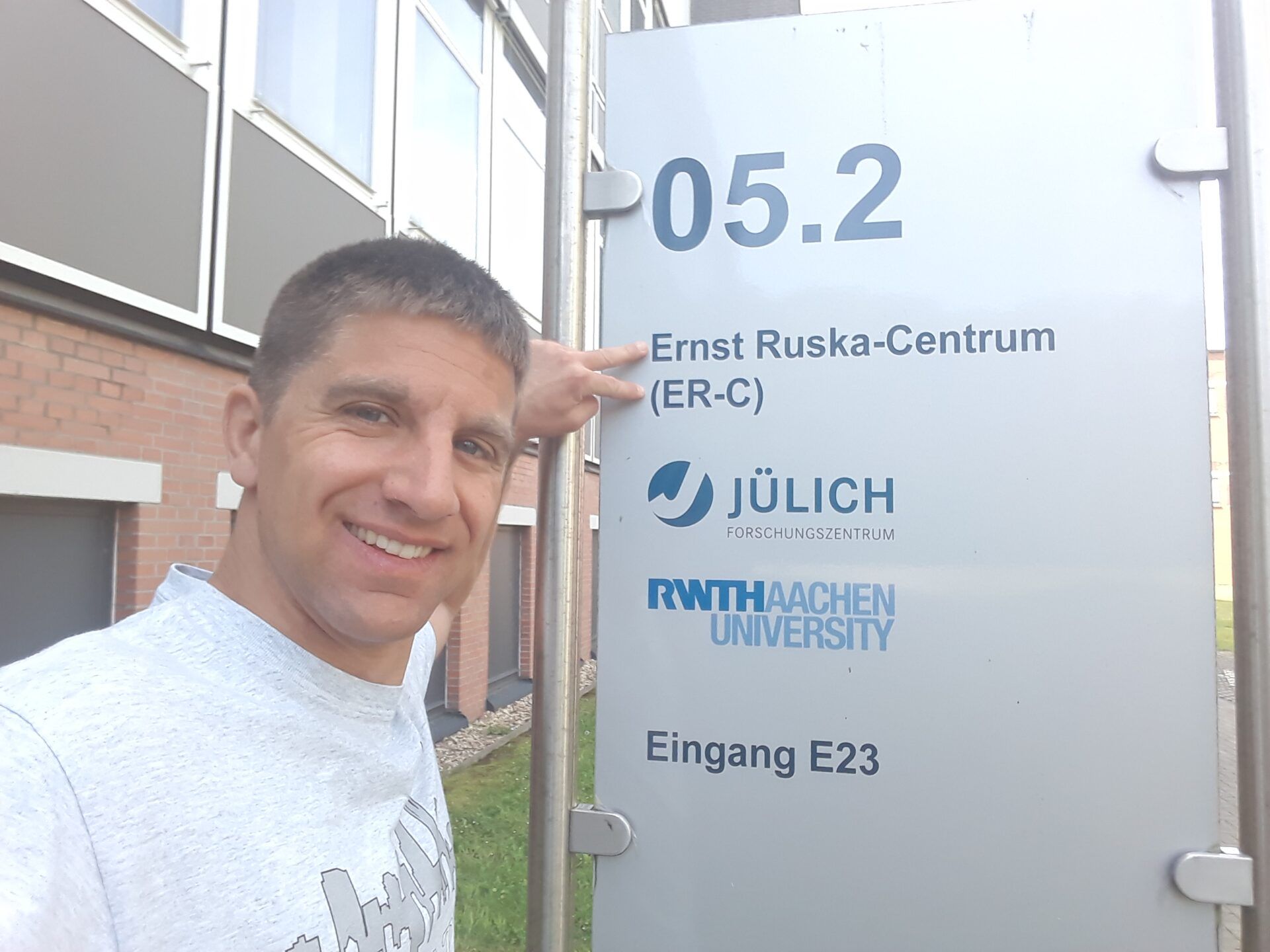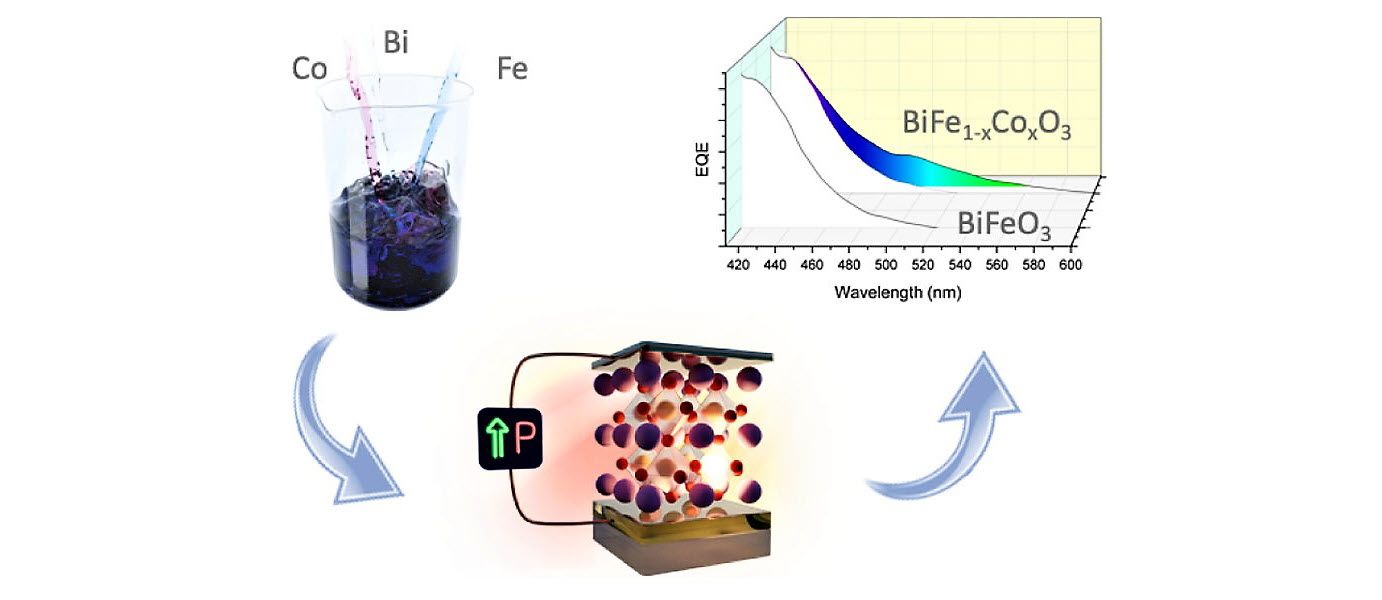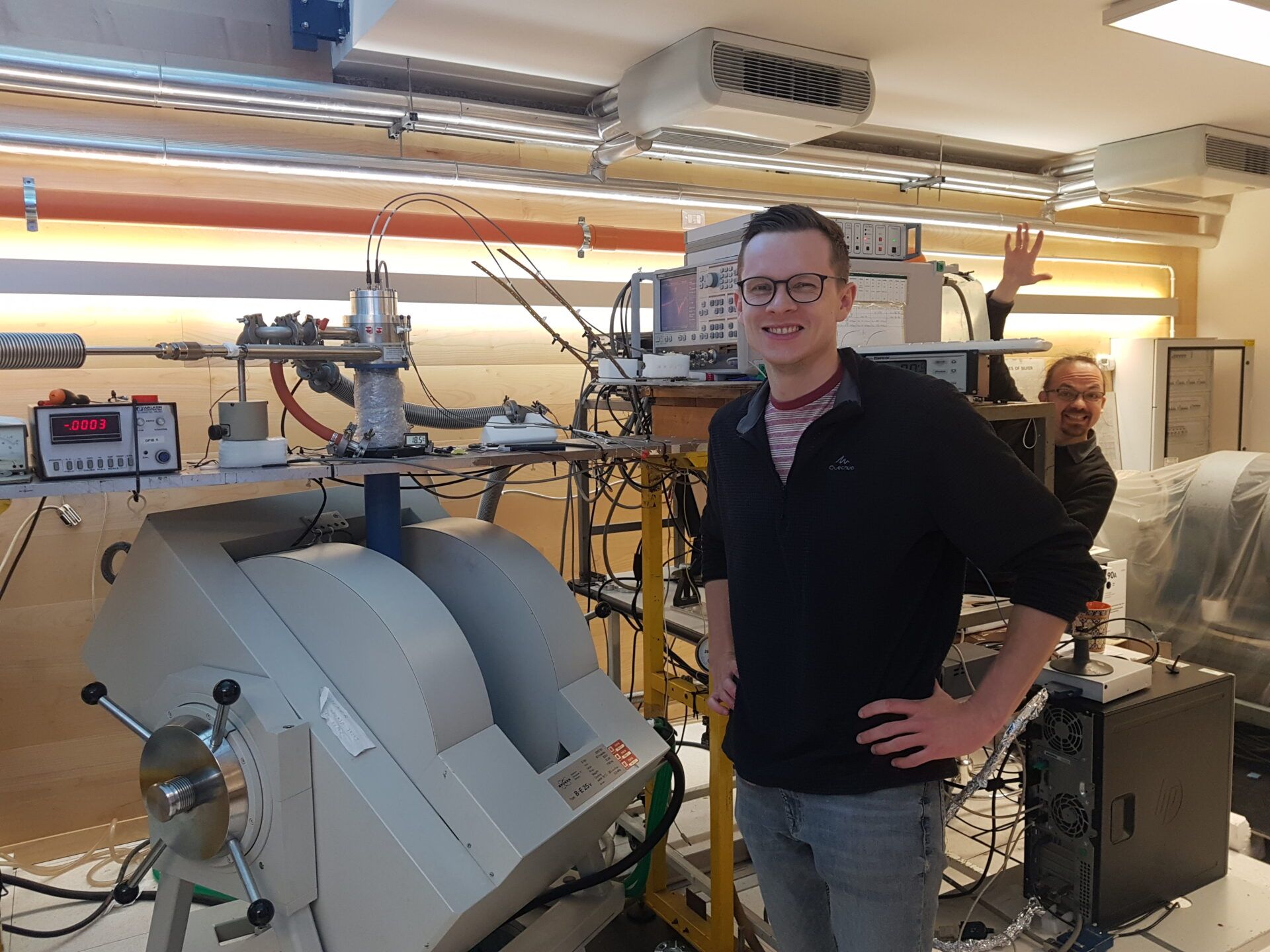Author: Mar Tristany
Dr. Juan Carlos Gonzalez Rosillo visited us!
Written by Mar Tristany on . Posted in Conferences, News.
Laura H. Greene, our next seminar’s group speaker!
Written by Mar Tristany on . Posted in News.
Congratulations to Albert Queraltó for FOTICMAB contest!
Written by Mar Tristany on . Posted in ERC projects (ULTRASUPERTAPE and IMPACT), News.
A new edition of the photo and video contest of the ICMAB, FOTICMAB 2019, has been opened between April 15th and May 26th and the winners were announced during last Friday’s ICMAB party .
Congratulations to Pedro Barusco and Pamela Machado!
Written by Mar Tristany on . Posted in General News.
During the 6th and 7th June, the 4th Scientific Meeting of BNC-b Students has been hold in ICMAB and ICN2. The conference aims to present the work performed by PhD students of the whole Barcelona Nanotechnology Cluster – Bellaterra (ICMAB, ICN2, IMB-CNM, UAB, ALBA), promoting collaborations between them in an academic and scientific environment, and is fully organized by the students themselves.
Welcome to Kapil Gupta, our new microscopist postdoc researcher!
Written by Mar Tristany on . Posted in ERC projects (ULTRASUPERTAPE and IMPACT), News, Welcome.
Hi,
I am Kapil Gupta from India, where I received my PhD (Physics) in Indian Institute of Technology (IIT) Madras, and later on, I worked as a postdoctoral fellow in Taiwan. I have recently joined the SUMAN group as a postdoc, to collaborate on the TEM studies of superconducting thin films in ULTRASUPERTAPE project, under the supervision of Prof. Teresa Puig. I am delighted to be here and looking forward to learn and collaborate with all of you.
Max Sieger at Ernst-Ruska Centre for Electron Microscopy at the Forschungszentrum Jülich
Written by Mar Tristany on . Posted in ERC projects (ULTRASUPERTAPE and IMPACT), News.
This week (13-17 May), our ULTRASUPERTAPE project post-doc, Max Sieger, went to the Ernst-Ruska Centre for Electron Microscopy at the Forschungszentrum Jülich near Aachen in Germany to participate in high-resolution transmission electron microscopy (TEM) experiments on superconducting thin films.
Band Gap Tuning of Solution-Processed Ferroelectric Perovskite BiFe1–xCoxO3 Thin Films
Written by Mar Tristany on . Posted in Materials for information science and electronics, Scientific Highlights.
Ferroelectric perovskite oxides are emerging as a promising photoactive layer for photovoltaic applications because of their very high stability and their alternative ferroelectricity-related mechanism for solar energy conversion that could lead to extraordinarily high efficiencies. One of the biggest challenges so far is to reduce their band gap toward the visible region while simultaneously retaining ferroelectricity. To address these two issues, herein an elemental composition engineering of BiFeO3 is performed by substituting Fe by Co cations, as a means to tune the characteristics of the transition metal–oxygen bond. We demonstrate by solution processing the formation of epitaxial, pure phase, and stable BiFe1–xCoxO3 thin films for x ≤ 0.3 and film thickness up to 100 nm. Importantly, the band gap can be tuned from 2.7 to 2.3 eV upon cobalt substitution while simultaneously enhancing ferroelectricity. As a proof of concept, nonoptimized vertical devices have been fabricated and, reassuringly, the electrical photoresponse in the visible region of the Co-substituted phase is improved with respect to the unsubstituted oxide.
Artur Romanov on his first secondment
Written by Mar Tristany on . Posted in Collaborations.
Catalyzed by a collaboration between Prof. Teresa Puig and Prof. Enrico Silva within the EUROfusion project, our PhD student, Artur Romanov, was invited for a secondment at the Engineering Department, section of Applied Physics, of Universitá Roma Tre.
Europe Day 2019
Written by Mar Tristany on . Posted in General News.
